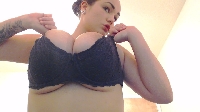
Bras should be comfortable and supportive not torture devices
Some women make the mistake of dashing into a store, grabbing a bra without trying it on, paying for it and heading out the door. This is not a smart move. For comfort and support, more thought must be given to this purchase.
A bra must be tried on before purchased because they rang vastly in size, style, shape and comfort depending on the brand. Furthermore, you may not be a 38C anymore. If your prefer to order bras online — especially if you wear a bigger or hard-to-find size – consider ordering a few sizes in one style, trying them on at home, and exchanging the ones that do not fit for the bra size that is perfect.
How should bras fit? Comfortably. The straps should not cut into the shoulders. The bottom band should not digs into your midsection. The cups should be ample enough to accommodate the breasts. Yes, breasts have been known to fall out when the cup size isn’t large enough.
When a bra doesn’t fit correctly you are not going to look your best. Slouchy breasts make you look heavier and unkempt. Additionally, the wearer is not getting the support her bosom and back need and this can lead to back and shoulder pain.
~
Women often wear their foundation garments far too long. Like humans, undergarments lose their elasticity over time and as result cannot effectively do their job.
When trying on a bra, if it fits when the band is hooked in the loosest hook you can tighten it up to the second or third hook as the garment ages and loses its firmness. This extends the life of the garment.
Where should breasts be located? No this isn’t a trick question. Ideally, breasts are situated midway between the elbows and the shoulders. Stand up. Put your arms down to your sides. Are your breasts hanging below the elbows? If so they need some hoisting. Shorten the straps. This pulls up the breasts.
The band, if properly placed, provides lift. The band size is the chest size or the size around the chest. If you are 34A, your band size is 34 and your cup size is A. An A cup is for a small-busted woman.
If you are getting a bigger band size each year when purchasing this garment consider, instead, getting a new bra in the same band size but a bigger cup size. This may be the solution to your comfort problems.
The edges of the cups should lie flat on the breasts and not gape open. If cups gape, the cup size is too big.
The center panel accommodates the space between the breasts. If the center panel is not lying flat against the breast bone this either indicates the garment is too small or the panel isn’t big enough for your chest.
Signs you need a different size include dimpling of the cup, which means the cups are too big. Get a smaller cup size. If your breasts are bursting out, get a bigger cup size.
Ideally, do not wear the same brassiere for more than one day without laundering. If you do, it stretches out very quickly.
When straps fall off shoulders this indicates the band is riding up. Get a smaller band size.
If the band isn’t large enough, you are going to be uncomfortable when you sit down because the ribcage gets bigger when seated.
Back fat can result from a brassiere that’s too big rather than too small. When wearing one with a smaller band size and wearing the band lower on the back this prevents back fat. The lower the back fits the better the support.
Go to a professional bra fitter if you feel you need assistance. It is worth the time and investment. When undergarments do no fit properly this is an annoying distraction and painful if shoulders are pinched and the mid-section is cut by a band that’s too tight.
